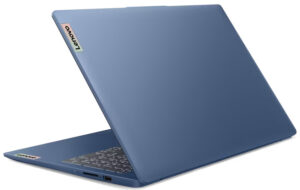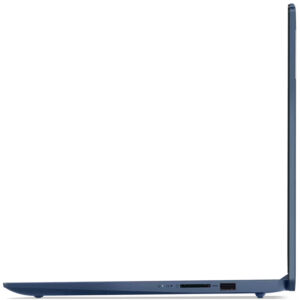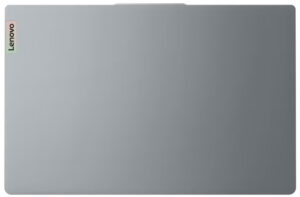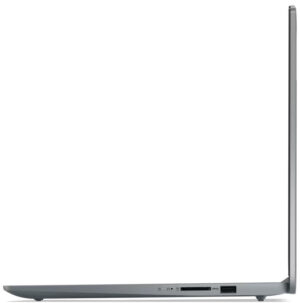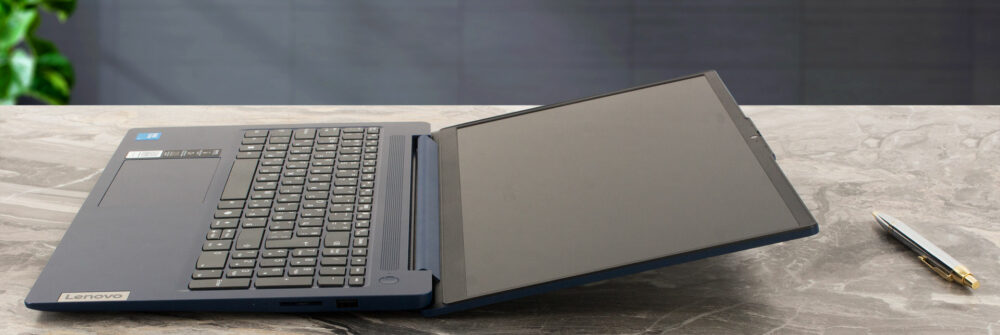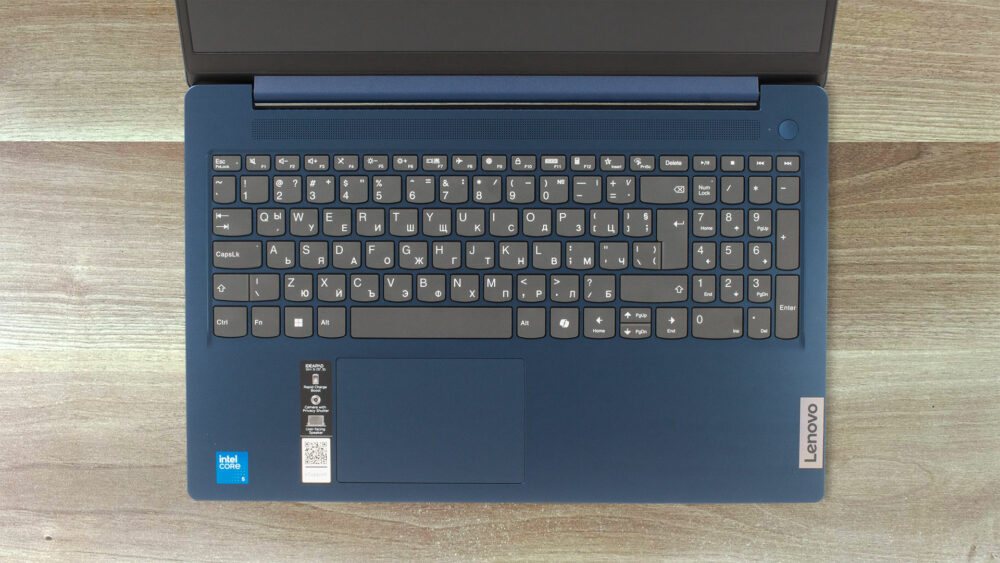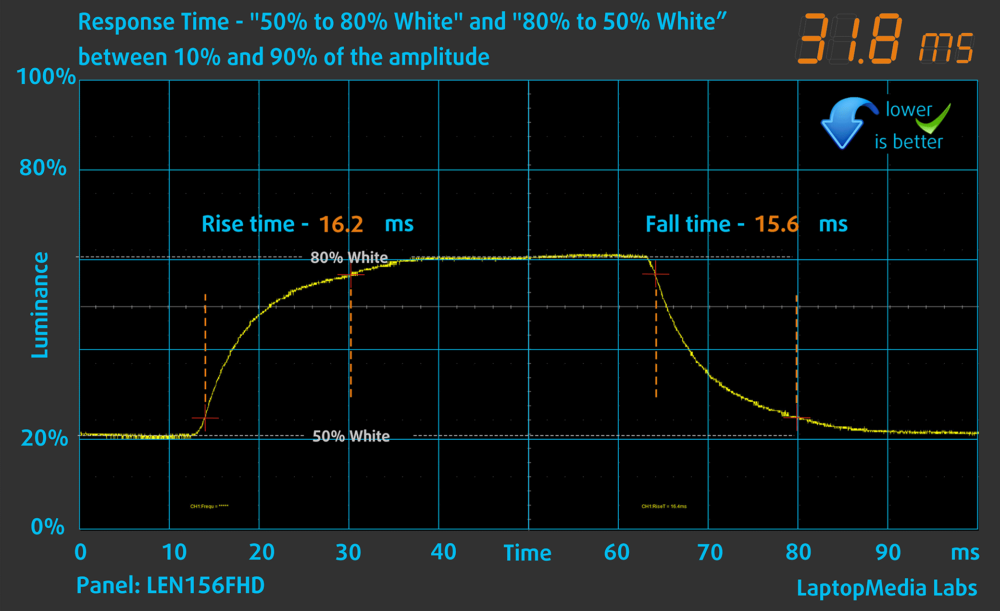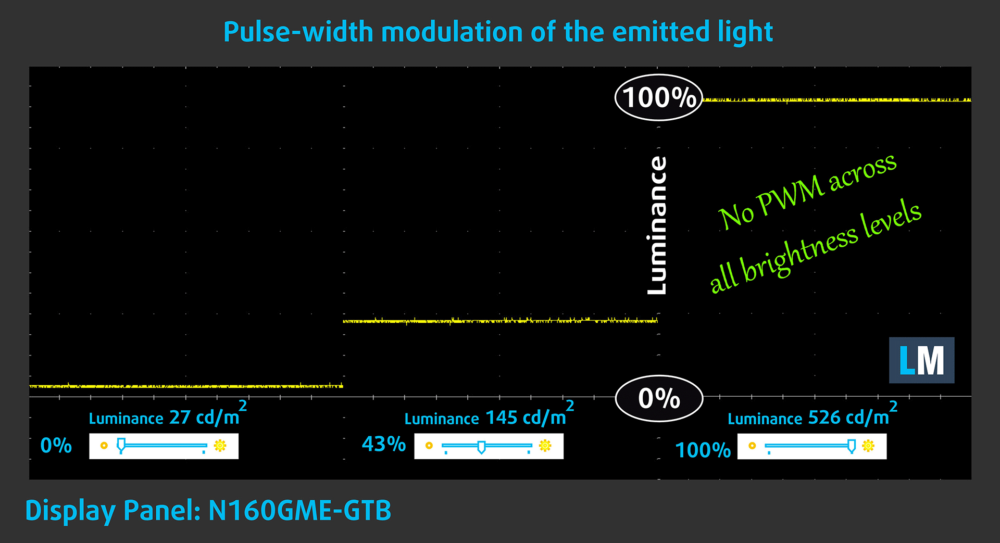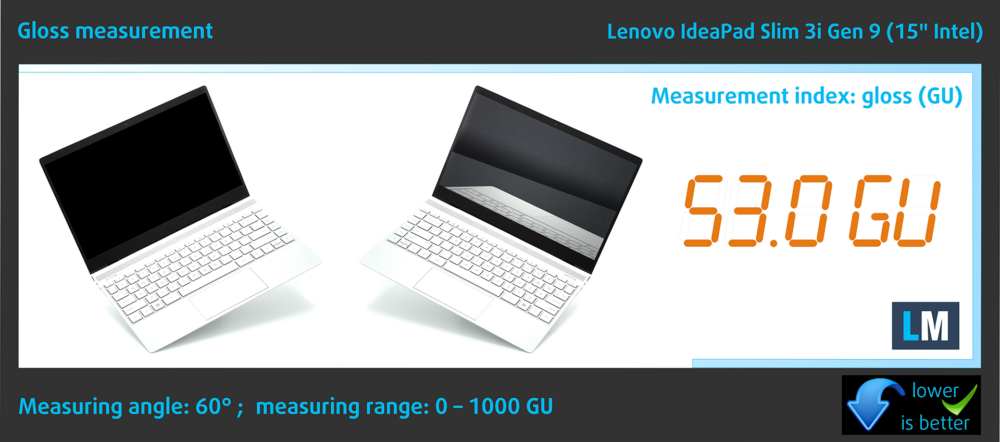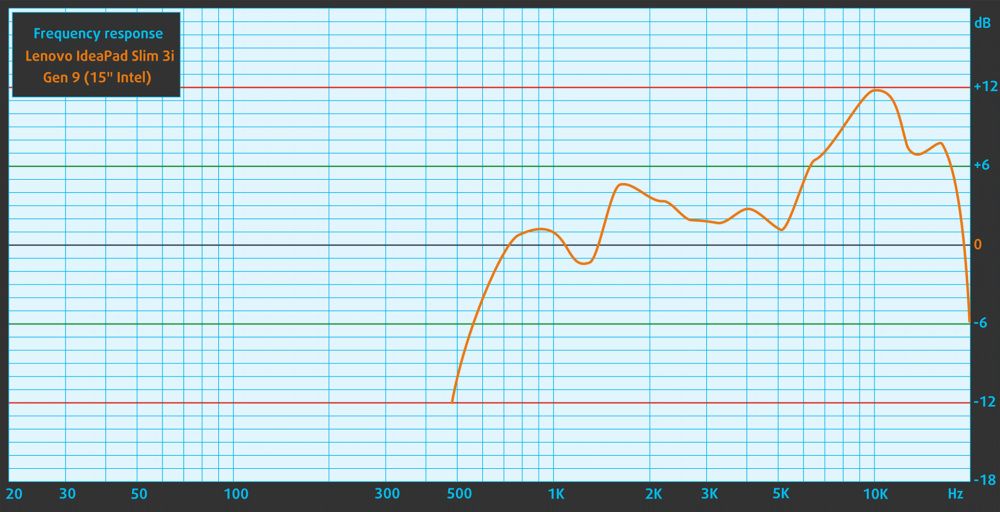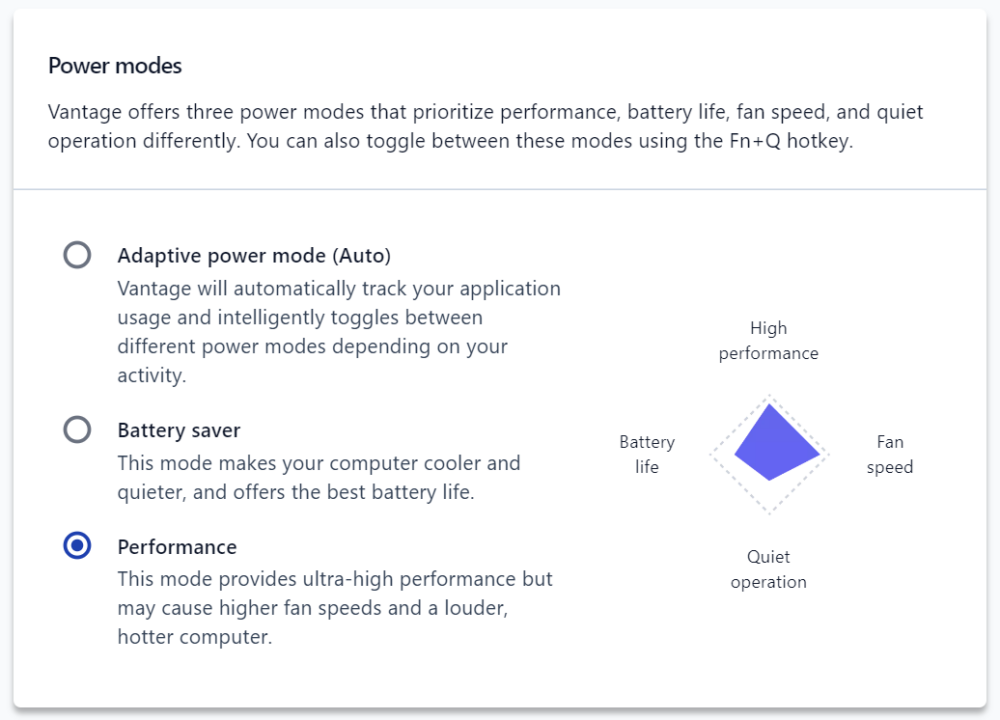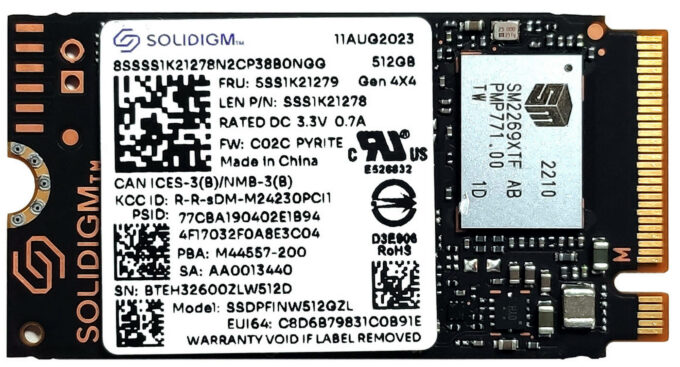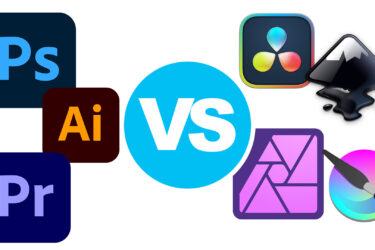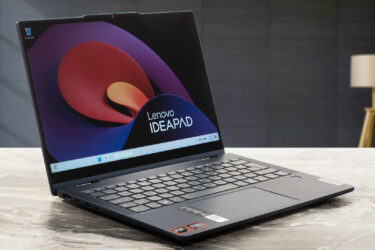Lenovo IdeaPad Slim 3i Gen 9 (15, Intel) review – Budget Workhorse with Comfort and Stamina
 Nowadays, even some entry-level laptops for normal home or office work are pretty capable, if you order them with a decent amount of memory and an SSD. The Lenovo IdeaPad Slim 3i Gen 9 (15″, Intel) is a modest device at a fair price that can be found with 15W Intel Raptor Lake-U Refresh CPUs based on the Alder Lake architecture. In this class, every penny counts and that’s why the base machines are offered with 8GB of soldered RAM in single-channel mode plus UFS 3.1 storage. If you want your laptop to be more snappy, you can pick one with 16GB soldered memory that works in dual-channel mode alongside an NVMe drive.
Nowadays, even some entry-level laptops for normal home or office work are pretty capable, if you order them with a decent amount of memory and an SSD. The Lenovo IdeaPad Slim 3i Gen 9 (15″, Intel) is a modest device at a fair price that can be found with 15W Intel Raptor Lake-U Refresh CPUs based on the Alder Lake architecture. In this class, every penny counts and that’s why the base machines are offered with 8GB of soldered RAM in single-channel mode plus UFS 3.1 storage. If you want your laptop to be more snappy, you can pick one with 16GB soldered memory that works in dual-channel mode alongside an NVMe drive.
Keep in mind that the default display option is a TN unit – avoid this variant if it’s possible. The other two IPS 1080p models are a much better choice and one of them is a touchscreen. As we already hinted, the upgradability is limited but at least the port selection seems adequate for the price. Some of the optional features for this Lenovo series are the backlight for the keyboard and the fingerprint reader. All devices rely on a privacy shutter, a self-healing BIOS, fTPM 2.0, and Wi-Fi 6 + Bluetooth 5.2 for connectivity. By the way, this laptop is also known as Lenovo IdeaPad Slim 3 (15IRU9).
You can check the prices and configurations in our Specs System: https://laptopmedia.com/series/lenovo-ideapad-slim-3-15iru9/
Contents
Specs, Drivers, What’s in the box
- HDD/SSD
- up to 1000GB SSD
- M.2 Slot
- 1x 2242 PCIe NVMe 4.0 x4 or 128GB UFS 3.1 See photo
- RAM
- up to 16GB
- OS
- No OS, Windows 11 Pro, Windows 11 Home
- Battery
- 47Wh
- Body material
- Plastic / Polycarbonate
- Dimensions
- 359.3 x 235 x 17.9 mm (14.15" x 9.25" x 0.70")
- Weight
- 1.62 kg (3.6 lbs)
- Ports and connectivity
- 2x USB Type-A
- 3.2 Gen 1 (5 Gbps)
- 1x USB Type-C
- 3.2 Gen 1 (5 Gbps), Power Delivery (PD), DisplayPort
- HDMI
- 1.4
- Card reader
- SD (SD, SDHC, SDXC)
- Ethernet LAN
- Wi-Fi
- 802.11ax
- Bluetooth
- 5.2
- Audio jack
- 3.5mm Combo Jack
- Features
- Fingerprint reader
- optional
- Web camera
- HD / FHD with Privacy Shutter, Fixed Focus
- Backlit keyboard
- optional
- Microphone
- Dual Microphone Array
- Speakers
- 2x 1.5W Stereo Speakers, Dolby Audio
- Optical drive
- Security Lock slot
All Lenovo IdeaPad Slim 3 (15IRU9) configurations
Drivers
All drivers and utilities for this notebook can be found here: https://pcsupport.lenovo.com/us/en/products/laptops-and-netbooks/ideapad-s-series-netbooks/ideapad-slim-3-15iru9/downloads
What’s in the box?
Inside the box, we found the mandatory paperwork and a 65W USB barrel-plug charger. Some devices are also bundled with an optional Lenovo WL310 Bluetooth Silent Mouse.
Design and construction
The IdeaPad Slim 3i Gen 9 (15″, Intel) looks absolutely standard for a Lenovo laptop – clean look with rounder corners plus Abyss blue or Arctic grey color. The machine is entirely made of plastic. This results in a pretty good starting weight of 1.62 kg and a nice profile thickness for a 15-incher – 17.9 mm. The lid can be flexed but not too much. Unfortunately, the central part of the keyboard feels a bit wobbly during typing. It doesn’t look too bad but it’s worth mentioning.
The lid can’t be opened with one hand but the whole process is eased thanks to the protrusion on top which provides a better grip. The glossy surface of the chassis attracts smudges with ease.
The bezels around the panel are decently thin. The “hump” on the lid is also home to a 720p or 1080p camera with a privacy shutter.
The max angle of the opening is close to the 180-degree mark.
The speaker grill is placed above the keyboard. The Power button that doubles as an optional fingerprint reader in the top right corner. The full-sized board with NumPad and an optional backlight is good for normal work. Its keycaps offer decent travel and clicky feedback. The unit also has a dedicated Copilot shortcut. The small “Up” and “Down” Arrow keys are hard to press.
The Mylar touchpad is small given the big body of the laptop. The pad smoothness and accuracy are okay and that’s why the unit is suitable for standard usage.
The bottom panel houses three rubber feet, and a two-row ventilation grill. The hot air is pushed through a vent on the back that aims at the hinge cover. Some amount of heat reaches the display during heavy CPU loads.
Ports
On the left side, you get a power plug, a USB Type-A 3.2 (Gen. 1) port, an HDMI 1.4 for up to 4K@30Hz external displays, a USB Type-C 3.2 (Gen. 1) port with 65W PowerDelivery 3.0 and DisplayPort 1.2 functionality, and an Audio Combo jack. On the right, we can spot a USB Type-A 3.2 (Gen. 1) port and an SD card reader.
Display and Sound Quality, Get our Profiles
Lenovo IdeaPad Slim 3i Gen 9 (15″, Intel) is equipped with a Full HD IPS, model number LEN156FHD (LEN9052). It comes with a 60Hz refresh rate. Its diagonal is 15.6″ (39.6 cm), and the resolution – 1920 x 1080p. Additionally, the screen ratio is 16:9, the pixel density – 142 ppi, and their pitch – 0.18 x 0.18 mm. The screen can be considered Retina when viewed from at least 60 cm (this is based on the pixel density and the typical viewing distance at which individual pixels cannot be distinguished by the human eye).
Viewing angles are good. We offer images at different angles to evaluate the quality.
Also, a video with locked focus and exposure.
The maximum measured brightness is 288 nits (cd/m2) in the middle of the screen and 286 nits (cd/m2) average across the surface with a maximum deviation of 8%. The Correlated Color Temperature on a white screen and at maximum brightness is 7100K.
In the illustration below you can see how the display performs from a uniformity perspective. The illustration below shows how matters are for operational brightness levels (approximately 140 nits) – in this particular case at 71% Brightness (White level = 143 cd/m2, Black level = 0.12 cd/m2).
Values of dE2000 over 4.0 should not occur, and this parameter is one of the first you should check if you intend to use the laptop for color-sensitive work (a maximum tolerance of 2.0 ). The contrast ratio is good – 1190:1.
To make sure we are on the same page, we would like to give you a little introduction to the sRGB color gamut and the Adobe RGB. To start, there’s the CIE 1976 Uniform Chromaticity Diagram that represents the visible specter of colors by the human eye, giving you a better perception of the color gamut coverage and the color accuracy.
Inside the black triangle, you will see the standard color gamut (sRGB) that is being used by millions of people on HDTV and on the web. As for the Adobe RGB, this is used in professional cameras, monitors, etc for printing. Basically, colors inside the black triangle are used by everyone and this is the essential part of the color quality and color accuracy of a mainstream notebook.
Still, we’ve included other color spaces like the famous DCI-P3 standard used by movie studios, as well as the digital UHD Rec.2020 standard. Rec.2020, however, is still a thing of the future and it’s difficult for today’s displays to cover that well. We’ve also included the so-called Michael Pointer gamut, or Pointer’s gamut, which represents the colors that naturally occur around us every day.
The yellow dotted line shows Lenovo IdeaPad Slim 3i Gen 9 (15″, Intel)’s color gamut coverage.
Its display covers 56% of the sRGB/ITU-R BT.709 (web/HDTV standard) in CIE1976 and 44% of DCI-P3.
Our “Design and Gaming” profile delivers optimal color temperature (6500K) at 140 cd/m2 luminance and sRGB gamma mode.
We tested the accuracy of the display with 24 commonly used colors like light and dark human skin, blue sky, green grass, orange, etc. You can check out the results at factory condition and also, with the “Design and Gaming” profile.
Below you can compare the scores of the Lenovo IdeaPad Slim 3i Gen 9 (15″, Intel) with the default settings (left), and with the “Gaming and Web design” profile (right).
The next figure shows how well the display is able to reproduce really dark parts of an image, which is essential when watching movies or playing games in low ambient light.
The left side of the image represents the display with stock settings, while the right one is with the “Gaming and Web Design” profile activated. On the horizontal axis, you will find the grayscale, and on the vertical axis – the luminance of the display. On the two graphs below you can easily check for yourself how your display handles the darkest nuances but keep in mind that this also depends on the settings of your current display, the calibration, the viewing angle, and the surrounding light conditions.
Response time (Gaming capabilities)
We test the reaction time of the pixels with the usual “black-to-white” and “white-to-black” method from 10% to 90% and vice versa обратно (these terms refer to the time it takes for pixels to change from one color to another (black to white and back to black in this case), a shorter time reduces picture blur with fast moving images).
We recorded Fall Time + Rise Time = 24 ms. Short pixel response time is a prerequisite for a smooth picture in dynamic scenes. Gamers should be happy.
After that, we test the reaction time of the pixels with the usual “Gray-to-Gray” method from 50% White to 80% White and vice versa between 10% and 90% of the amplitude.
Health Impact: PWM (Screen flickering)
Pulse-width modulation (PWM) is an easy way to control monitor brightness. When you lower the brightness, the light intensity of the backlight is not lowered, but instead turned off and on by the electronics with a frequency indistinguishable to the human eye. In these light impulses, the light/no-light time ratio varies, while brightness remains unchanged, which is harmful to your eyes. You can read more about that in our dedicated article on PWM.
Lenovo IdeaPad Slim 3i Gen 9 (15″, Intel)’s display doesn’t flicker at any brightness level. This makes the screen pretty comfortable for long periods of use.
Health Impact: Blue light emissions
Installing our Health-Guard profile not only eliminates PWM but also reduces the harmful Blue Light emissions while keeping the colors of the screen perceptually accurate. If you’re not familiar with the Blue light, the TL;DR version is – emissions that negatively affect your eyes, skin, and your whole body. You can find more information about that in our dedicated article on Blue Light.
Health Impact: Gloss-level measurement
Glossy-coated displays are sometimes inconvenient in high ambient light conditions. We show the level of reflection on the screen for the respective laptop when the display is turned off and the measurement angle is 60° (in this case, the result is 53 GU).
(High Gloss: >70 GU; Low Gloss: <30 GU; Medium Gloss: 30 – 70 GU)
Sound
Lenovo IdeaPad Slim 3i Gen 9 (15″, Intel)’s Dolby Audio speakers produce a sound of relatively good quality. However, the low, mid, and high tones all have some slight deviations from clarity.
Buy our profiles
Since our profiles are tailored for each individual display model, this article and its respective profile package are meant for Lenovo IdeaPad Slim 3i Gen 9 (15″, Intel) configurations with 15.6″ LEN156FHD (LEN9052) (1920 x 1080) IPS.
*Should you have problems with downloading the purchased file, try using a different browser to open the link you’ll receive via e-mail. If the download target is a .php file instead of an archive, change the file extension to .zip or contact us at [email protected].
Read more about the profiles HERE.
In addition to receiving efficient and health-friendly profiles, by buying LaptopMedia's products you also support the development of our labs, where we test devices in order to produce the most objective reviews possible.

Office Work
Office Work should be used mostly by users who spend most of the time looking at pieces of text, tables or just surfing. This profile aims to deliver better distinctness and clarity by keeping a flat gamma curve (2.20), native color temperature and perceptually accurate colors.

Design and Gaming
This profile is aimed at designers who work with colors professionally, and for games and movies as well. Design and Gaming takes display panels to their limits, making them as accurate as possible in the sRGB IEC61966-2-1 standard for Web and HDTV, at white point D65.

Health-Guard
Health-Guard eliminates the harmful Pulse-Width Modulation (PWM) and reduces the negative Blue Light which affects our eyes and body. Since it’s custom tailored for every panel, it manages to keep the colors perceptually accurate. Health-Guard simulates paper so the pressure on the eyes is greatly reduced.
Get all 3 profiles with 33% discount
Performance: CPU, GPU, Storage
All benchmarks and tests were conducted with the “Best performance” preset applied in the Windows “Power & Battery” menu. Also, the “Performance” preset is selected in the Lenovo Vantage app.
CPU options
This device can be found with Intel Core 3 100U, Core 5 120U, or Core 7 150U.
The laptop that we picked has a Core 5 120U.
Results are from the Cinebench R23 CPU test (the higher the score, the better)
GPU options
All devices are iGPU-only machines.
Our notebook has an Intel Iris Xe Graphics G7 (80EU).
Results are from the 3DMark: Time Spy (Graphics) benchmark (higher the score, the better)
Results are from the 3DMark: Wild Life benchmark (higher the score, the better)
Gaming tests
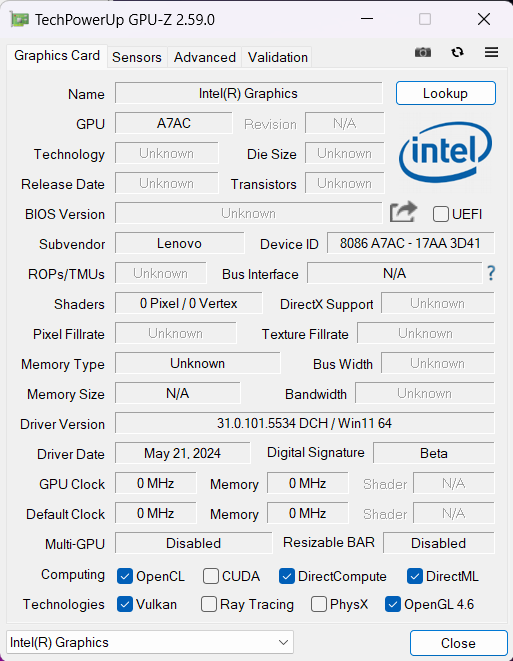

| CS:GO | HD 1080p, Low (Check settings) | HD 1080p, Medium (Check settings) | HD 1080p, MAX (Check settings) |
|---|---|---|---|
| Average FPS | 153 fps | 113 fps | 77 fps |

| DOTA 2 | HD 1080p, Low (Check settings) | HD 1080p, Normal (Check settings) | HD 1080p, High (Check settings) |
|---|---|---|---|
| Average FPS | 82 fps | 61 fps | 50 fps |
Storage performance
Our machine has a 512GB SOLIDIGM SSDPFINW512GZL. The write speeds of this Gen 4 NVMe are unimpressive but the SSD is decently cool under benchmarking – 56°C. However, installing apps is happening slower than usual, which can annoy some users.
[eBook Guide + Tools] How to MAX OUT Your Laptop
You can make your laptop Faster. LaptopMedia has tested thousands of models in the last 15 years, and we have yet to see a notebook that couldn't be made more powerful through modifications.
That's why we decided to bundle everything we know about how to achieve this in an Easy-to-Follow, Step-by-Step, and Laboratory-Tested, all in one project.
Read more about it here:
[eBook Guide + Tools] How to MAX OUT Your Laptop

🛠️ GPU Modifications: vBIOS, Overclocking, Undervolting
⚙️ Building Fast/Reliable RAID configuration
💻 Hardware upgrade tips for best results
🖼 Display enhancing
💾 OS Optimization for best performance
Temperatures and comfort, Battery Life
Max CPU load
In this test we use 100% on the CPU cores, monitoring their frequencies and chip temperature. The first column shows a computer’s reaction to a short load (2-10 seconds), the second column simulates a serious task (between 15 and 30 seconds), and the third column is a good indicator of how good the laptop is for long loads such as video rendering.
Average P-core frequency; Average E-core frequency; CPU temp.; Package Power
| Intel Core 5 120U (15W Base Power) | 0:02 – 0:10 sec | 0:15 – 0:30 sec | 10:00 – 15:00 min |
|---|---|---|---|
| Lenovo IdeaPad Slim 3i Gen 9 (15″ Intel) | 3.84 GHz @ 2.86 GHz @ 86°C @ 51W | 2.82 GHz @ 2.09 GHz @ 78°C @ 28W | 2.34 GHz @ 1.72 GHz @ 65°C @ 20W |
Here, the Core 5 120U can sustain high clocks and short and medium loads. The frequencies remain pretty good in longer loads (ergo, way higher than the official Intel base values), as well as the chip temperatures.
Comfort during full load
The single fan is audible but not noisy in “Performance” mode when the CPU is loaded at max. At the same time, the keyboard deck feels slightly warm but not hot at all.
In “Adaptive power” mode, you can expect 2 GHz for the P cores and 1.4 GHz for the E cores plus a bit lower noise levels.
Battery
Now, we conduct the battery tests with the Windows Best Power Efficiency setting turned on, screen brightness adjusted to 140 nits and all other programs turned off except for the one we are testing the notebook with. The 47Wh battery pack lasts for around 8 hours of video playback. To achieve that, you have to apply the “Best Power Efficiency” preset in the Windows “Power & Battery” menu and select the “Adaptive Power” mode in the Lenovo Vantage app.
For every test like this, we use the same video in HD.
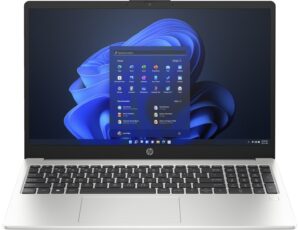
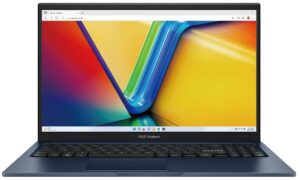

Disassembly, Upgrade options, and Maintenance
To gain access to the internals, you have to undo 10 Torx-head screws. Pry the back by placing a thin plastic tool in between the plate and the base. Pop the top two corners and then pry the sides and the front.
Here’s how the bottom panel looks on the inside.
This notebook has a 47Wh battery. If you want to take it out, pull out the connector from the mainboard and undo the 2 Phillips-head screws that keep the unit fixed to the chassis. The capacity is enough for around 8 hours of video playback.
The RAM is soldered as well as the metal cap above the chips. You get 8GB in a single-channel mode or 16GB of LPDDR5-5200MHz memory that works in a dual-channel mode.
You can rely on 128GB of USF 3.1 for storage or one M.2 slot for 2242 Gen 4 SSDs. Our device is with NVMe and there is a thermal pad beneath it.
The cooling looks modest. It has one large fan, a long heat pipe, one decently sized heat sink, and a heat spreader.
Verdict
 If you need an unpretentious device for standard home or office tasks, the Lenovo IdeaPad Slim 3i Gen 9 (15, Intel) is a good choice when it’s combined with an SSD and dual-channel memory. Yep, don’t forget that the base configurations come with a TN panel, UFS storage, and just 8GB of soldered RAM in single-channel mode. These ones should be avoided unless your budget is extremely tight. The overall performance of our laptop with Core 5 120U, dual-channel RAM, and an NVMe is good. The only con is the slow write speeds of the SSDs which cause slow app installations. Despite the modest-looking cooling, the CPU can maintain high clocks no matter the load, the fan isn’t too noisy, and the keyboard doesn’t get too hot when the processor is fully stressed.
If you need an unpretentious device for standard home or office tasks, the Lenovo IdeaPad Slim 3i Gen 9 (15, Intel) is a good choice when it’s combined with an SSD and dual-channel memory. Yep, don’t forget that the base configurations come with a TN panel, UFS storage, and just 8GB of soldered RAM in single-channel mode. These ones should be avoided unless your budget is extremely tight. The overall performance of our laptop with Core 5 120U, dual-channel RAM, and an NVMe is good. The only con is the slow write speeds of the SSDs which cause slow app installations. Despite the modest-looking cooling, the CPU can maintain high clocks no matter the load, the fan isn’t too noisy, and the keyboard doesn’t get too hot when the processor is fully stressed.
The 15.6″ IPS display is suitable for work because it’s a PWM-free unit with comfortable viewing angles. Expectedly, the color coverage is low which is normal for this price class. The input devices are decent and the same applies to the port selection with three USBs and an SD card reader. Unfortunately, the three connectors are rated at 5 Gbps.
Despite the modest capacity of just 47Wh, the battery life is good since the CPU isn’t thirsty – around 8 hours of video playback is a good result. The Lenovo IdeaPad Slim 3 (15IRU9) is a light and thin 15-inch workhorse that offers a PWM-free display, good battery life, low weight, and good comfort under load.
You can check the prices and configurations in our Specs System: https://laptopmedia.com/series/lenovo-ideapad-slim-3-15iru9/
Pros
- Light and thin for its class
- The fan isn’t too noisy “Performance” mode
- PWM-free (LEN9052)
- Comfortable viewing angles (LEN9052)
- Optional 1080p camera with a privacy shutter shutter
- Type-C port with PowerDelivery 3.0 and DisplayPort 1.2 + SD card reader
- The CPU can maintain high clocks in longer stress (~2.34 GHz for the P cores)
- Decent input devices
- Optional fingerprint reader
- Good comfort under full system load
- Long battery life given the modest capacity of 47Wh
Cons
- Soldered memory and just one M.2 slot
- The base configurations are with UFS 3.1 storage and single-channel memory
- The build quality could be better
- Low sRGB coverage (LEN9052)
- All USB ports are rated at 5 Gbps

